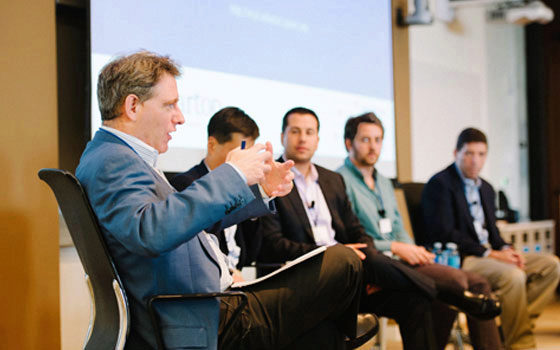The Existing Power of Customer Lifetime Value

It’s no secret that Pete Fader has been touting the power of CLV long before companies thought it was cool. To many companies, the idea of assigning a specific value to each individual customer is a bit outlandish. However, the actionable insights available from such a practice are invaluable to any organization.
Recently, Pete Fader moderated a panel at the 2015 Wharton Marketing Conference entitled, “The Existing Power of Customer Lifetime Value.” Two completely different industries, dressbarn and Comcast, spoke about the dramatic changes and benefits they have experienced since adopting a customer-centric business model.
Customers’ lifetime value, allows Sandi Michels, VP of Consumer Insights at dressbarn, unprecedented decision-making power. Executives at dressbarn have observed a subset of their customers who only shop during the end of seasons when merchandise is typically on clearance (at 60 – 70% off retail). Customers who exhibit this behavior typically have a low lifetime value. What dressbarn has been able to do in light of these findings is adjust how often and specifically when they ‘talk’ to them. Instead of continually reaching out over the course of the entire year hoping these customers might shop, now they only communicate to them in January and April when they know that message will resonate with these shoppers. Even with this slight change in their marketing efforts, dressbarn is saving valuable resources by effectively reducing the amount of time spent with these customers and reallocating these resources.
Sandi also gave an example of how Customer Equity (the aggregated total of their customers’ lifetime value) has helped dressbarn understand that losing customers didn’t have to negatively affect the company’s bottom line. Even though the company observed a sizable number of customers becoming inactive over the course of a few quarters, the CLV metrics clearly showed that the customers they lost hadn’t been very profitable, furthermore, they were able to save the money in the marketing budget they would have otherwise spent on them trying to get them into a store.
Comcast has experienced an interesting cultural shift – it’s not only the marketers and sales employees that are finding value in adopting CLV, but also the customer service department. Warren Umali discussed how they calculate CLV based on how much money the customer spends at Comcast and the amount that a customer costs the organization through various channels such as customer service. They measure the amount the customer costs them versus the amount of revenue the customer generates, and then leverage that information throughout different Comcast business units.
Looking Forward
Comcast hopes to move towards collecting data and deploying real-time decisions with the launch of new technology, like their new X1 entertainment system. Similarly, dressbarn hopes that their valuable CLV insights can eventually be available to sales associates in their brick-and-mortar locations. Armed with this data, associates can give customers a more personal and positive experience in their stores.
Since companies such as dressbarn and Comcast have demonstrated the existing power of CLV, it’s only a matter of time before examples like these will become universal — and the industry standard — across all sectors of business. The days of purely intuition-based marketing are ending; companies now have the tools to make data-driven decisions for every facet of the organization and should take full advantage of this emerging opportunity.


